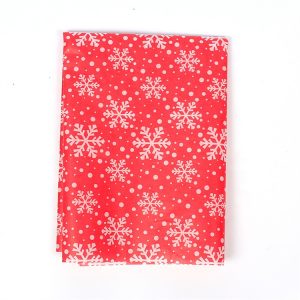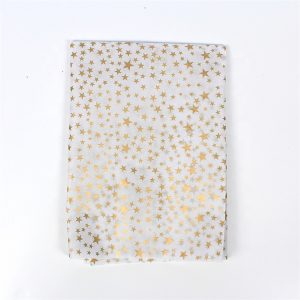Using eco-friendly and sustainable wrapping paper is a fantastic way to reduce your environmental impact while still presenting beautiful gifts. Here are some eco-friendly wrapping paper options and sustainable gift-wrapping ideas:
- Recycled Wrapping Paper: Look for wrapping paper made from recycled materials. This helps reduce the demand for virgin paper and minimizes the amount of waste in landfills.
- FSC-Certified Paper: The Forest Stewardship Council (FSC) certification ensures that the paper comes from responsibly managed forests, promoting sustainable forestry practices.
- Plantable Wrapping Paper: Some companies offer plantable wrapping paper embedded with seeds. After unwrapping the gift, the recipient can plant the paper, and it will grow into flowers or herbs.
- Fabric Wraps: Use fabric, such as scarves, tea towels, or cloth napkins, to wrap your gifts. Fabric wraps can be reused countless times and make the gift itself an additional present.
- Brown Kraft Paper: Plain brown kraft paper is an eco-friendly and versatile option. You can decorate it with stamps, drawings, or natural elements like leaves and twine.
- Newspaper or Magazine Pages: Reuse old newspaper or magazine pages as wrapping paper. It adds a unique and vintage touch while recycling materials.
- Furoshiki Wrapping: Furoshiki is a traditional Japanese wrapping technique using square cloth. Learn different folding methods to wrap your gifts elegantly and reuse the fabric later.
- Paper Bags: Reuse paper bags from stores or boutiques as gift wrap. You can personalize them with drawings or stamps.
- Gift Boxes and Tins: Instead of wrapping in paper, consider using reusable gift boxes or tins that the recipient can use for storage afterward.
- Avoid Plastic Ribbons and Bows: Opt for natural materials like twine, jute, or cotton ribbons for gift decorations, avoiding plastic-based alternatives.
- Upcycled Materials: Get creative and use old maps, sheet music, or even children’s artwork as unique wrapping materials.
- Gift Wrapping Alternatives: Consider alternative gift-wrapping techniques like the Japanese art of Furoshiki mentioned earlier or the ancient art of using cloth bags, known as Bojagi in Korea.
By choosing eco-friendly and sustainable gift-wrapping options, you can show your love and care for both the recipient and the planet. Reusing materials, opting for recyclable options, and reducing waste contribute to a greener and more environmentally conscious gift-giving experience.




















